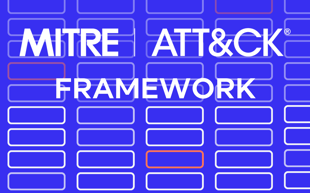Next named exclusive Trail Blazer in NEW 2024 Radicati DLP Market Quadrant Report
Read the Report
Cloud data security has become increasingly important as more organizations take advantage of the benefits of cloud computing. Companies are transitioning many of their IT requirements from on-premises environments to the cloud environment.
Cloud computing offers access to advanced technology, flexibility, scalability, cost savings, and enhanced resilience over in-house solutions.
Migrating to the cloud is an attractive option for organizations of all sizes. When considering the move, one factor that deserves serious consideration is data protection in the cloud environment and how the organization will maintain a strong security posture while leveraging cloud computing.
Without understanding the benefits and challenges of cloud security, a company may inadvertently put important and sensitive data at risk.
In this article:
 |
Cloud data security encompasses technologies, security controls, and strategies to safeguard data in the cloud from breaches, loss, and unauthorized access at rest, in motion, and in use. It involves protecting data across networks, applications, containers, workloads, and other cloud environments.
Cloud data security is a shared responsibility between the cloud service provider and the customer, with the customer being responsible for securing applications and data in the cloud. Implementing cloud data security practices helps protect sensitive data, mitigates data breach risks, protects brand reputation, enhances customer trust, avoids fines and fees, and ensures regulatory compliance.
 |
Cloud computing has become an integral part of modern computing across various industries, but it also brings security risks that need to be addressed. One of the risks is unsecure APIs, which can be exploited by attackers to gain unauthorized access to cloud resources.
Another risk is insider threats, where individuals with authorized user access to the cloud misuse their privileges or inadvertently share sensitive data.
Additionally, data breaches are a significant concern, as companies increasingly rely on the cloud for storing and processing critical data. These breaches can occur due to misconfigurations or lack of visibility into the cloud ecosystem.
The challenges of securing cloud data include misconfiguration, poor monitoring, limited visibility, and account hacking. It is crucial for organizations to implement countermeasures to defend against these risks and ensure the security of their cloud infrastructure and data.
 |
Cloud computing offers many benefits, and as more companies store their data in the cloud, the need for its protection becomes crucial. Data loss can have severe consequences for organizations, with some even facing bankruptcy following a breach.
Organizations need cloud data security to protect the valuable information they store and process in cloud environments. Cloud providers often have more resources to ensure security compared to on-premise computing. However, organizations still need to consider their own security measures when protecting data, applications, and workloads in the cloud.
A survey conducted by Statista indicates that IT leaders are concerned with both external attacks and risks posed by malicious or unintentional insider activity. This concern is well-founded as seen in the rise of organized, Russian-based hackers focused on attacking cloud resources.
Cloud security strategies and practices are essential for maintaining business continuity and defending against modern-day cyberattacks. Cloud data security is a broad area, and while it is not possible to prevent every attack, a well-designed cloud security strategy significantly reduces the risk of cyber attacks.
While at first glance it may seem that cloud security is no different than in-house security, some major differences need to be addressed. Let’s look at the benefits and challenges of implementing robust cloud data security measures.
 |
Implementing effective cloud data security is beneficial to organizations in multiple ways. When an organization knows its data is protected, it can use it for more productive business purposes without undue concern over its safety.
 |
In some cases, cloud data security is very similar to the cybersecurity strategy companies use to secure an on-premises data center. However, there can be significant challenges involved in making the shift from protecting in-house resources and those furnished by a CSP.
Following are some challenges and difficulties that may face companies attempting to protect data resources in the cloud.
 |
Proper security settings are essential for robust cloud data security. Misconfigured cloud servers can expose data directly to the wider internet, leading to data breaches. Therefore, it is crucial for companies to develop a robust cloud cybersecurity strategy and configure their security settings properly. This requires expertise in working with each cloud environment and close collaboration with the cloud vendor.
Consistent security policies across all clouds (public cloud, private cloud, hybrid cloud, and multicloud environments) and data centers are also important. If one aspect of a company's cloud infrastructure is not protected, attackers are more likely to target the weak link.
Hybrid solutions, such as using different clouds as backup for on-premise databases, can enhance cloud data security.
Granular privilege management and access control is another crucial aspect. Identity and access management (IAM) products help track user identities, authorize users, and deny access to unauthorized users, reducing the risk of unauthorized user access and privilege abuse.
In addition to these measures, organizations need to address the advanced cloud security challenges. These challenges include the increased attack surface, lack of visibility and tracking, ever-changing workloads, granular privilege and key management, complex environments, and cloud compliance and governance.
The following best practices and strategies are designed to enhance your organization’s cloud security posture and provide comprehensive protection for your valuable data.
The Reveal Platform by Next offers customers an advanced solution to prevent the deliberate or unintentional loss of valuable cloud data. The tool enforces a company’s data handling policies to ensure information is not misused throughout the IT environment.
Reveal employs next-gen agents powered by machine learning to identify and categorize data before it can be used inappropriately. Users are given instructive messages when they violate policies to help build security awareness and minimize future errors.
Try a demo of Reveal and let the experts at Next help you protect your cloud data.
Encryption key management is important because possession of the keys enables the holder to decrypt the information. Customers can typically manage the keys themselves or have a third party perform the task.
The risk in external management of encryption keys is that it potentially exposes the organization to data loss by an untrustworthy vendor.
Who is responsible for protecting SaaS data in the cloud?
Customers are responsible for protecting the SaaS data stored in the cloud. The shared cloud security responsibility matrix puts the responsibility of protecting user data on the users.
Best practices for protecting SaaS data include implementing strong password policies, data encryption, multi-factor authentication, and providing extensive user education. The addition of a DLP platform like Reveal provides enhanced protection for your SaaS data.
Shadow IT is dangerous to an organization because it introduces unapproved and potentially insecure software into the environment. The unapproved nature of this software removes it from the organization’s monitoring and security protocols.
Users may be trying to streamline certain job functions through the use of SaaS solutions and inadvertently put data at risk.
A cloud access security broker (CASB) is an essential tool for cloud data protection that offers visibility and control over data and applications, which can help identify shadow IT, enforce compliance policies, and more. A CASB complements data loss prevention solutions to increase an organization's security posture and protect cloud data.

Blog

Blog

Blog

Blog

Resources

Resources

Resources

Resources

